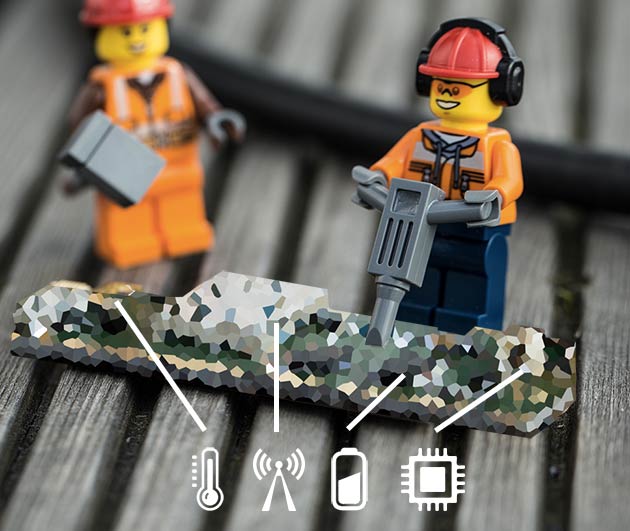UNDERSTANDING THE INTERNET OF THINGS (1/3)
If you are not a “geek” or technology-lover, the Internet of Things may seem out of reach, complex and only made for insiders. If this is the case for you, you have come to the right place. We have launched a series of articles aiming to help people understand the Internet’s 3rd revolution in a clear and concise way.
Essentially, the Internet of Things revolves around 3 key points: an object (“thing”), a form of connectivity and data availability.
For now, let’s start with our object, or thing.
The recipe for connected objects
A connected object is like a good recipe. You need good ingredients and a few tricks of the trade. Some keep their recipes a secret, but we prefer to share ours. One thing remains certain, experience will always make the world of difference.
A wide variety of products fall under the heading of connected object. When trying to reach a common-ground definition for these diverse products, this is what we came up with: device made up of one or several components, used to measure remote searchables via a communication network. In other words, we can now give a voice to objects which had up until now remained silent. A connected object is thus crammed with technology.
Here are the 4 ingredients…sorry, the 4 essential components to creating a connected object:
The sensor: used to measure external parameters such as temperature, humidity, movement, filling levels or atmospheric pressure, to know whether your object is working, or if it has a problem with its electrical supply. It all starts with information drawn from the physical world. The object can of course include several sensor.
 The embedded software: Once the information has been gathered, it needs to be stored and processed before being transmitted. This is why we sometimes use the term “smart objects”. Indeed, most of the time, the information is stored locally and several successive or different measurements are required and need to be compiled before being transmitted.
The embedded software: Once the information has been gathered, it needs to be stored and processed before being transmitted. This is why we sometimes use the term “smart objects”. Indeed, most of the time, the information is stored locally and several successive or different measurements are required and need to be compiled before being transmitted.
The transmission chip: once the information has been compiled, it is ready to be sent off. This is when the transmission chip comes in. It differs according to the type of network, volume of information to be transmitted and transfer speed.
![]() The battery: connected objects can of course draw their power from an electric socket, but most of the time they are autonomous. As such, one of the engineers’ challenges is to reduce energy expenditure for each component as much as possible to increase battery life, or to reduce the size of the object. The most energy-consuming component is the transmission chip. Therefore, if your object transmits information quickly, its battery life will probably be shorter. That is when embedded intelligence comes in, ensuring that only the most relevant information is transmitted when you need it. Furthermore, the different types of connections (Bluetooth, Wifi, GSM, LPWA) do not all consume the same amount of energy.
The battery: connected objects can of course draw their power from an electric socket, but most of the time they are autonomous. As such, one of the engineers’ challenges is to reduce energy expenditure for each component as much as possible to increase battery life, or to reduce the size of the object. The most energy-consuming component is the transmission chip. Therefore, if your object transmits information quickly, its battery life will probably be shorter. That is when embedded intelligence comes in, ensuring that only the most relevant information is transmitted when you need it. Furthermore, the different types of connections (Bluetooth, Wifi, GSM, LPWA) do not all consume the same amount of energy.
Once the ingredients have been gathered, the various quantities need to be tested to ensure the recipe is perfect and suits your guests’ taste. That requires us to try, try and try again. Lastly, the success of your dish…sorry, of your connected object, lies in how you present it. You therefore need to think of the perfect dish…sorry, the perfect design, to ensure the greatest possible success!


